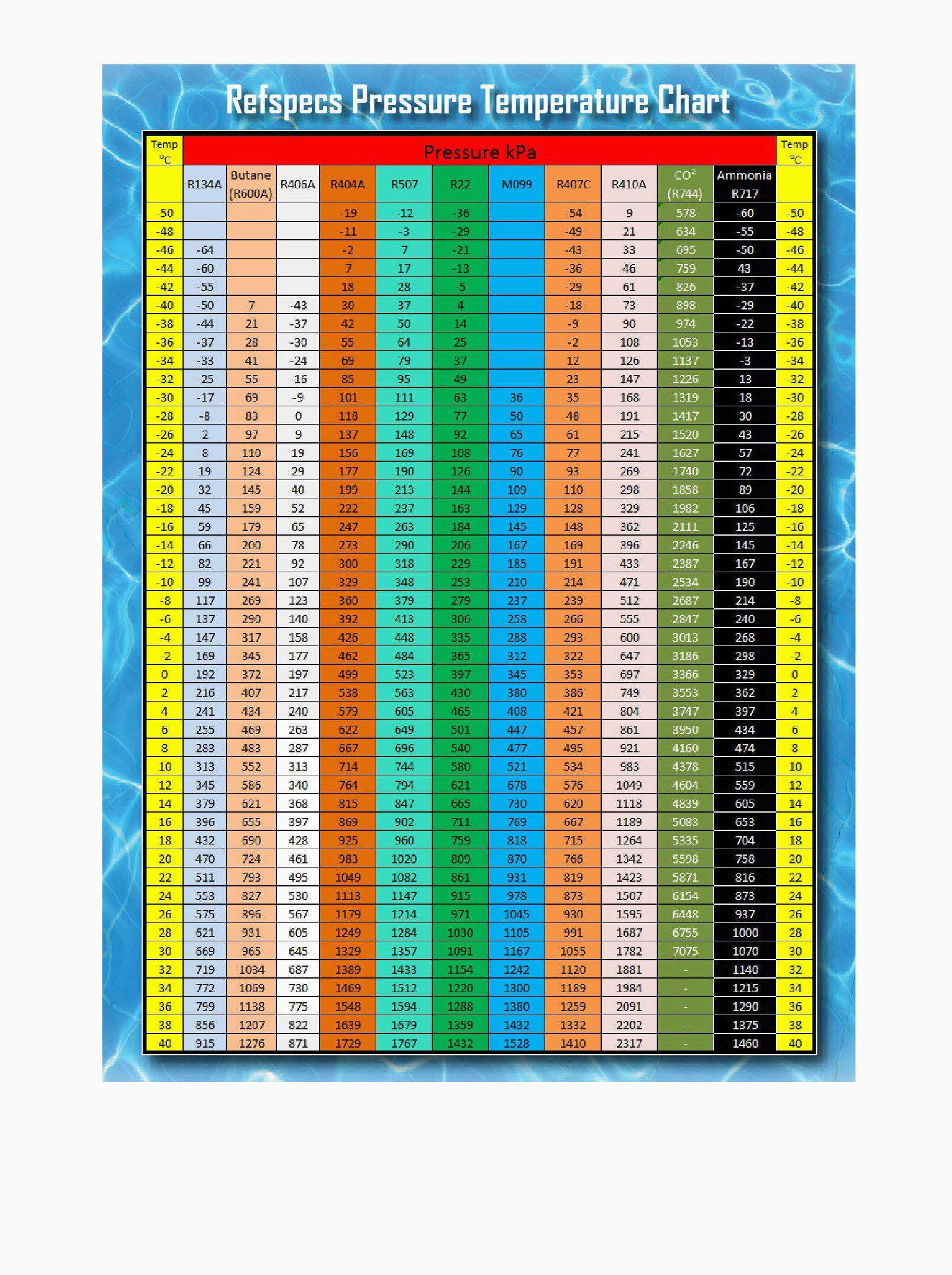Master the R22 PT Chart: Quickly pinpoint R22 refrigerant pressure at specific temperatures for accurate system diagnostics and maintenance, even as R22 is being phased out.
Understanding R22 and Its Phase-Out
Remember R22? It was the standard refrigerant for air conditioners for decades. However, due to its ozone-depleting properties, R22 is being phased out. While you can still use existing R22 systems, new AC units utilize alternative refrigerants like R-410A. This makes understanding the R22 Pressure-Temperature (PT) chart crucial for maintaining these older systems. Dive deeper into the intricacies of refrigerant behavior with this insightful R410A pressure temperature chart.
Decoding the R22 PT Chart
The R22 PT chart is essentially a decoder ring for your AC unit. It visually represents the relationship between pressure and temperature for R22 refrigerant in a saturated state (both liquid and vapor present). These readings are vital signs for your AC, offering insights into its functionality. The chart utilizes pounds per square inch gauge (psig) for pressure and degrees Fahrenheit (°F) for temperature.
How to Interpret the R22 PT Chart
Using the chart is straightforward:
- Measure the Pressure: Check the pressure gauge on your AC unit and record the reading.
- Measure the Temperature: Measure the outdoor air temperature near the outdoor unit and record it.
- Locate the Intersection: On the R22 PT chart, find the point where your pressure and temperature readings intersect. This point indicates the refrigerant’s state and can reveal potential problems.
R22 Pressure: Finding the “Goldilocks Zone”
Like Goldilocks and her porridge, your AC system has an ideal pressure range. For R22, this typically falls between 76 psig at 45°F and 260 psig at 120°F. Readings outside this range often suggest an issue.
Practical Troubleshooting with the R22 PT Chart
Let’s explore how the chart helps diagnose common problems:
Low Pressure
Low pressure often suggests a refrigerant leak. Imagine a slow leak in a car tire – the pressure gradually decreases. Similarly, a leak in your AC system causes R22 to escape, lowering the pressure.
High Pressure
High pressure can indicate an overcharged system or a blockage. Think of an overfilled balloon – too much pressure can cause it to burst. Similarly, an overcharged AC system operates under excessive pressure. A blockage, like a clogged artery, restricts refrigerant flow and also leads to high pressure.
Fluctuating Pressure
Fluctuating pressure suggests a more complex issue requiring further investigation. Like a sputtering car engine, inconsistent pressure indicates something isn’t functioning correctly. This could be due to a variety of factors, requiring a professional’s expertise to diagnose accurately.
Here’s a summary of potential issues:
| Problem | Possible Cause (As Suggested by the R22 PT Chart) | Analogy |
|---|---|---|
| Low Pressure | Probably a refrigerant leak. | Leaky tire |
| High Pressure | Likely an overcharged system or a blockage. | Overfilled balloon/Clogged artery |
| Fluctuating Pressure | Could be various issues; further investigation needed. | Sputtering engine |
R22 Alternatives: Embracing Change
As R22 phases out, alternatives like R-410A are becoming the norm. R-410A is more environmentally friendly but operates at different pressures, requiring its own PT chart. Understanding these differences is crucial for technicians working with diverse AC systems.
Safety First: Handling R22 with Care
Refrigerants like R22 require careful handling. Prioritize safety and call a certified HVAC professional for major repairs or refrigerant changes. They possess the training and equipment for safe and effective service. Remember, some tasks are best left to the experts.
R22 on a 100-Degree Day: What to Expect
On a 100°F day, the expected R22 pressure is around 195.9 psig. However, this is just a baseline. Several factors influence the actual pressure, including:
- System Load: How hard your AC is working to cool your home.
- Superheat/Subcooling: Measures of refrigerant efficiency.
- Malfunctions: Leaks, blockages, or faulty components.
R22 Suction Pressure: The Low Side Story
Suction pressure refers to the pressure on the low side of the refrigerant cycle, within the evaporator. It fluctuates with evaporator temperature. A typical range is 60-70 PSI, but this can vary. Low suction pressure may indicate leaks, restricted airflow, or a faulty expansion valve. High suction pressure can be caused by an overcharged system, dirty condenser coils, or high ambient temperatures.
Considering Long-Term Costs
Using an R22 system involves increasing refrigerant costs as availability decreases. Upgrading to a modern, environmentally friendly system might be a worthwhile long-term investment.
The Future of Refrigerants
Ongoing research constantly refines our understanding of refrigerants and system dynamics. While current knowledge informs our practices, it’s vital to acknowledge the evolving nature of this field.
By mastering the R22 PT chart and understanding the factors influencing pressure, you can effectively diagnose and maintain your R22 system. Remember to prioritize safety and consult a professional when needed.
- Unveiling the Enigma: Mansoureh Khojasteh Bagherzadeh’s Public Appearances & Private Life in Iran - July 18, 2025
- Unveiling the Mystery: Mansoureh Khojasteh Bagherzadeh’s Husband: A Rare Glimpse into a Private Life - July 18, 2025
- Unveiling Masoud Khamenei’s Mother: Power, Influence, and Iran’s Future - July 18, 2025
















